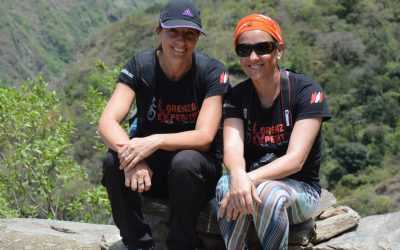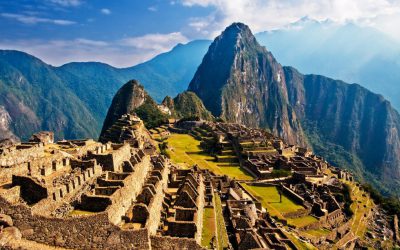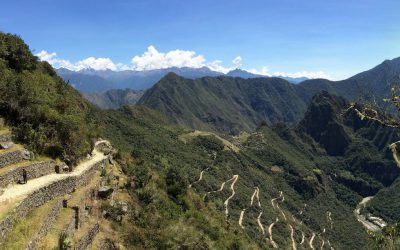Machu Picchu
Travel Guide
Introduction to Machu Picchu
Hidden among the Andes, the Incas managed to keep Machu Picchu concealed from the Spanish conquistadores. It remained covered by vegetation for centuries and, while known about by the local population, it was only revealed to the world in 1911 by US explorer Hiram Bingham.
Set on a ridge between two peaks – Machu Picchu (old peak) and Huayna Picchu (young peak) – in the middle of a tropical mountain forest (known poetically as ceja de selva, which means the eyebrow of the jungle), Machu Picchu has two main sectors: one agricultural and the other urban. Check out the ingenious terracing, the Temple of the Sun, the fountains and squares, or the Intiwatana solar observatory. It will flabbergast you how the Inca managed to get all the stones up there, let alone how they built such intricate structures that blend in with the natural rock formations, following natural curves and hills.
The journey there is pretty worthwhile too as you go from Cusco high in the Andes down to the more tropical vegetation of the jungle. For the fit and adventurous, you can get there along the famous Inca Trail where you will pass ruins and walk through cloud forests, arriving to Machu Picchu in time to see the sunrise. There are also great alternative routes to Machu Picchu including the Salkantay Trail and the Lares Trail, if you don’t want to be stuck with crowds. If you feel you haven’t got the legs for that much walking, there’s always the train which will take you to the foot of Machu Picchu!
What not to miss in Machu Picchu
The 2-day/4-day Inca Trail
Hiking the full length of the Inca Trail takes four days of a long hard slog, but you can also just hike the last part of it on a 2-day hike. Either way we’re sure that you’ll agree that it’s more than worth it to see the mystical mist rising to reveal Machu Picchu in all its glory from the Sun Gate at dawn; not to mention the wealth of ruins you will see along the way.
Climb Huayna Picchu
This vantage point offers views over the whole complex of Machu Picchu and can be done either in the morning or afternoon and is restricted to 400 people a day. If it is booked up or if you’re looking for an easier hike, you can climb up Machu Picchu Mountain which also offers impressive views of the Inca Citadel.
Machu Picchu Mountain
Machu Picchu Mountain (not to be confused with the Machu Picchu ruins) is the most spectacular yet one of the most overlooked optional treks available at Machu Picchu as most people just don’t know about it! An easier hike than Huayna Picchu, the mountain trek offers unparalleled views of the famous Inca sanctuary and the surrounding mountain scenery.
Go Early!
Machu Picchu opens its gates at 6am. The buses leave as of 5.30am from Aguas Calientes, but expect long waiting lines. To get to Machu Picchu early, you can alternatively hike up to the entrance, depending how fast you are, this takes around 1 hour! But it is worth it to see Machu Picchu with not as many visitors and in all its early morning beauty.
Aguas Calientes & its Hot Springs
The closest town to Machu Picchu is, Aguas Calientes, a mishmash of restaurants and hotels balanced precariously on the side of the Vilcanota River. Visit the hot springs for a relaxing soak after hiking the Inca Trail!
What you need to know
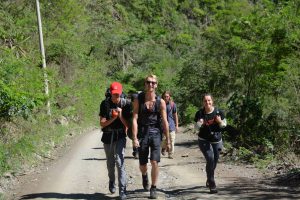
When to go
Machu Picchu is much lower than Cusco and is set in the upper jungle which means it is mild all year round. The best time to visit is between April and early December although keep in mind that June through to August are the busiest months. The site of Machu Picchu is usually at its most crowded between 10am and 2pm.

How to get there
Machu Picchu is only accessible by train (or by walking). Trains depart from either Cusco or Ollantaytambo. From Cusco it takes around 3 hours and from Ollantaytambo around 1 hour. PeruRail offers 3 different trains: the Expedition Train, Vistadome Train and the luxurious Hiram Bingham Train. The trains differ in comfort and view – the Vistadome and Hiram Bingham have larger windows allowing you to enjoy the scenery around you. The other difference is the timetable, where the more comfortable trains have slightly better departure times, allowing you to enjoy Machu Picchu for longer. For the best views on the way to Machu Picchu, sit on the left side of the train.
There is one alternative and cheaper way to get to Aguas Calientes: you can take also the shuttle bus to the hidro electric near Santa Maria. From there it is a 2 hour walk to Aguas Calientes. The drive from cusco to the Hidro Electric takes around 5 to 6 hours.
Where to stay
There is only one hotel at Machu Picchu itself and that is the luxurious Machu Picchu Sanctuary Lodge. Although it will cost you to stay there, it’s also the only place you can sit in a Jacuzzi and look at the Inca city long after the crowds have left.
In Aguas Calientes, also known as Machu Picchu Pueblo, you’ll find a range of cheaper hotels as well as a handful of more luxurious and boutique hotels although their prices are higher than you’ll find in the rest of Peru. Try to get a room with balcony that will give you enchanting views of the Río Urubamba.
Restaurants in Aguas Calientes offer a simple selection of small Peruvian restaurants and pizzerias.
Disposable plastic bottles and food are not allowed into the site of Machu Picchu, although enforcing this law can be a bit lax. It’s best to eat outside the gate or at the Machu Picchu Sanctuary Lodge restaurant, use camping-type drink bottles and pack out all trash, even organic waste. You will be able to buy water at the cafe just outside the entrance, but this is served only in glass bottles.
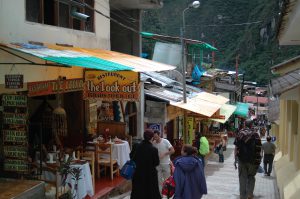
Search our blog for great tips and destination information
or check out a few of our favorites!
The Action Packed Inca Jungle Trail to Machu Picchu
The Magnificent Inca Jungle Trail to Machu Picchu The multi-adventure action packed Inca Jungle Trail is one of the best alternatives for reaching Machu Picchu. If you’re short on time, want to experience something different or, if you’re a little bit of an adrenaline...
The Hidden Secrets of Machu Picchu Revealed
The mysterious faces and symbols found at the ancient Inca citadel of Machu Picchu in Peru are extremely intriguing. Not only do they shed a unique light on the Inca civilization and culture but they are also not very obvious if you do not know what you are looking...
Your Day by Day Guide to Hiking the Inca Trail to Machu Picchu
The famous Inca Trail leading to the spectacular archaeological site of Machu Picchu is one of the most challenging yet rewarding ways to reach the Inca Citadel. Taking 4 days to walk the 26 mile-long Inca Trail, hiking between 6 and 9 hours a day, crossing 3 mountain...

